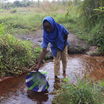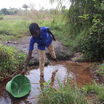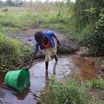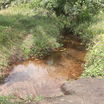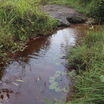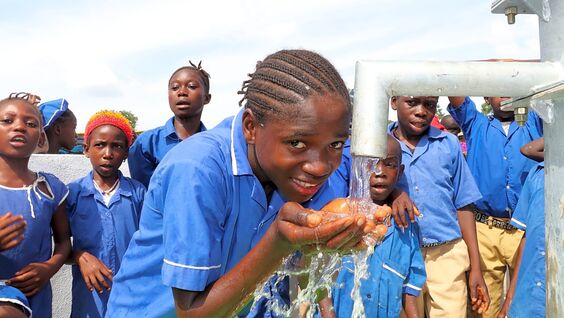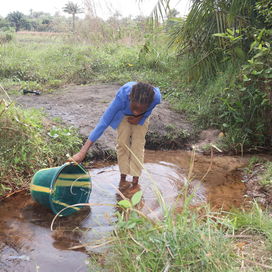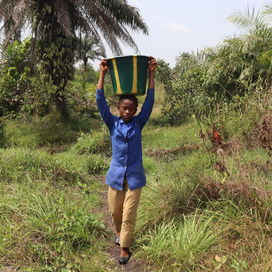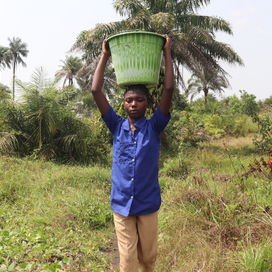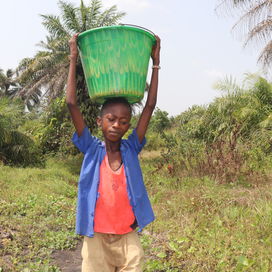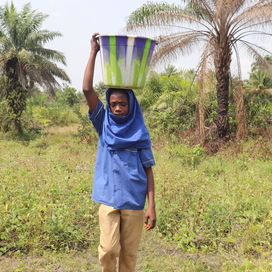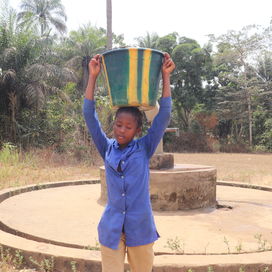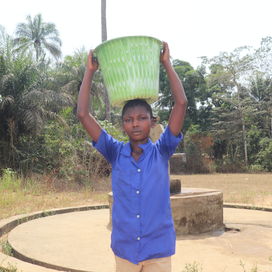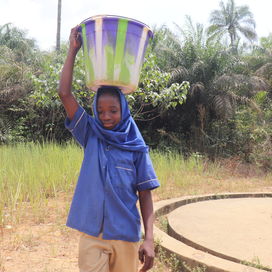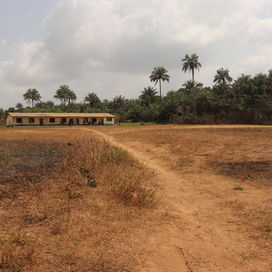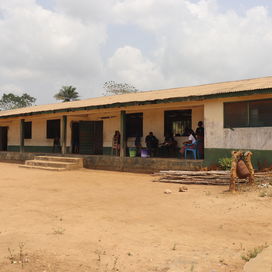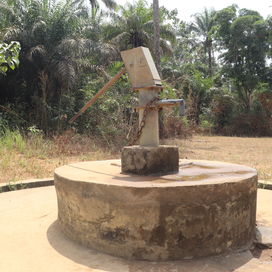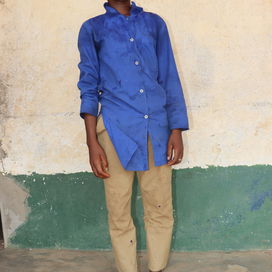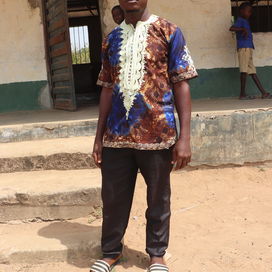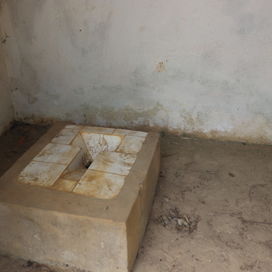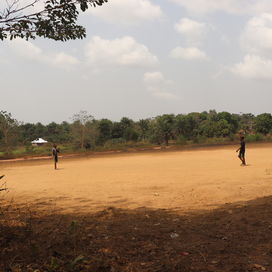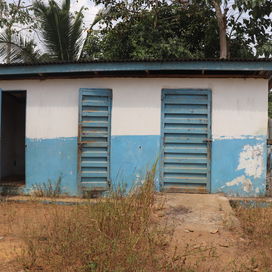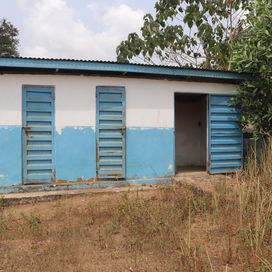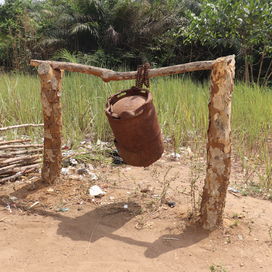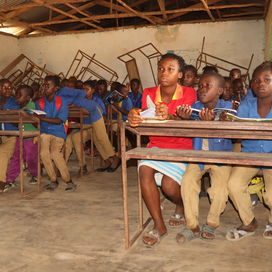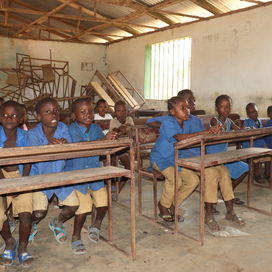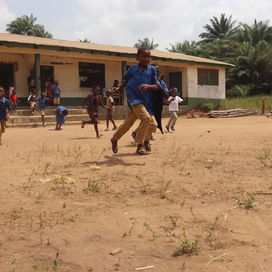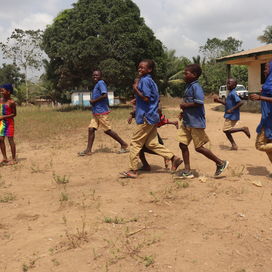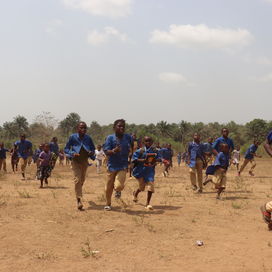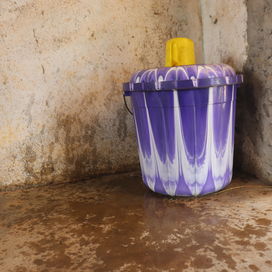Project
SLMB Primary School
Project Complete!
Lokomasama, Laminaya 2 Village SLMB Primary School was founded by Mohamed Kargbo in the year 1985. It is one of the prominent Primary Schools in Lokomasama Chiefdom and it serves the entire surrounding community. When developed, there was no primary school in the surrounding communities and children walked far distance to attend school in other communities. With the help of Mohamed Kargbo this school was established for the entire community to serve as learning center and lessen the burden of children walking far distance to attend school.
The school began with one building with three classrooms, and 310 children; 200 boys and 110 girls. There were four staff at that time; three male and one female.
Currently, the school has a total of 243 children attending the school; 130 boys and 113 girls. There are three staff in the school, and all are male. There is a single building with three classrooms. Two building latrine structure and each building has six pits, one building for boys and one building for girls.
The school began with one building with three classrooms, and 310 children; 200 boys and 110 girls. There were four staff at that time; three male and one female.
Currently, the school has a total of 243 children attending the school; 130 boys and 113 girls. There are three staff in the school, and all are male. There is a single building with three classrooms. Two building latrine structure and each building has six pits, one building for boys and one building for girls.
SLMB Primary School’s well dries from March to June every year, and the water levels are only getting lower with time. This leaves the school’s 243 students and 3 staff without reliable water for at least a quarter of the year. During this time, students are sent out to the nearby swamp.
“The school pump is not working,” 12-year-old student Fatmata K. explained.
“I cannot get water to drink at the school,” she continued. “I must go to the swamp to get water to drink. In the morning hours or lunchtime, I usually go to the swamp to fetch drinking water, and this causes me to miss devotion and classes. I am always late because of the distance.”
“I cannot get water to drink at the school,” she continued. “I must go to the swamp to get water to drink. In the morning hours or lunchtime, I usually go to the swamp to fetch drinking water, and this causes me to miss devotion and classes. I am always late because of the distance.”
The swamp is a half-mile from the school compound. The water fetched here has a yellowish tint and green algae floating inside. Students have also spotted poisonous snakes in the thick bushes surrounding the path to the swamp, which makes each trip dangerous, especially during midday when the sun is at its highest – and this is, most often, the time students are sent out to collect water.
“Sometimes, going through the path, there are sharp-edged sticks and grasses [that] cause wounds and itches on my feet,” Fatmata explained.
“Sometimes, going through the path, there are sharp-edged sticks and grasses [that] cause wounds and itches on my feet,” Fatmata explained.
The water fetched from the swamp is left out in a bucket so all the visible sediment settles to the bottom, leaving clear-ish water for the students to drink. However, just because water is clear doesn’t mean that it’s clean.
“Sometimes, this water I fetch from the swamp tastes bad and the water appears to be muddy,” Fatmata said. “I must allow it [to] settle for some time before drinking [it]. I see domestic animals get access into the swamp water, especially dogs, goats, and sheep. [They] drink the water and sometimes defecate [in] the surroundings.”
Because the school doesn’t have the resources to boil every bucket of swamp water, staff members tell the students not to drink any water at school during the long stretch of months when their well has no water.
Because the school doesn’t have the resources to boil every bucket of swamp water, staff members tell the students not to drink any water at school during the long stretch of months when their well has no water.
But some of the younger students don’t understand the dangers of drinking swamp water, and with the steep teacher-to-student ratio, the staff can’t stop the little ones from drinking swamp water when they get desperately thirsty. And when other students go all day without water, they become dehydrated, which makes focusing in class difficult. This generates a high rate of students falling asleep in class from a lack of energy.
“Controlling the children [is] a big challenge,” said 32-year-old teacher Subah Mohamed Kamara. “It is also hard for me to do my job effectively when there is little or no water at the school.”
The poor quality of the water the students drink leaves them with frequent vomiting and diarrhea, which exacerbates the dehydration they experience during school hours and also leads to absenteeism.
“The little amount of water fetched from the swamp is not enough to serve the whole school throughout the day,” Subah continued. “Drinking water from the swamp is a risk to good health [and] always causes diarrhea on me. I find it hard to come to the school to teach when I am experiencing diarrhea.”
“Controlling the children [is] a big challenge,” said 32-year-old teacher Subah Mohamed Kamara. “It is also hard for me to do my job effectively when there is little or no water at the school.”
The poor quality of the water the students drink leaves them with frequent vomiting and diarrhea, which exacerbates the dehydration they experience during school hours and also leads to absenteeism.
“The little amount of water fetched from the swamp is not enough to serve the whole school throughout the day,” Subah continued. “Drinking water from the swamp is a risk to good health [and] always causes diarrhea on me. I find it hard to come to the school to teach when I am experiencing diarrhea.”
Here's What Your Support Will Do:
Well Rehabilitation
The well marked for this overhaul is dry for a few months every year and needs major work to supply adequate, clean water to the community year round. The pump will be removed, and a hand auger will be lowered inside and powered by a drill team. This hand auger will allow the team to drill several meters deeper to hit a sufficient water column that will ensure the well supplies water throughout all seasons.
As the team drills, casing will be installed, transforming the bottom of this hand-dug well into a borehole. PVC piping will connect this lower system directly to the pump, a construction that we know will also improve the quality of water.
Once this plan is implemented, everyone within the community will have access to safe drinking water in both quality and quantity, even through the dry months.
Hygiene and Sanitation Training
There will be hygiene and sanitation training sessions offered for three days in a row.
Well Rehabilitation
The well marked for this overhaul is dry for a few months every year and needs major work to supply adequate, clean water to the community year round. The pump will be removed, and a hand auger will be lowered inside and powered by a drill team. This hand auger will allow the team to drill several meters deeper to hit a sufficient water column that will ensure the well supplies water throughout all seasons.
As the team drills, casing will be installed, transforming the bottom of this hand-dug well into a borehole. PVC piping will connect this lower system directly to the pump, a construction that we know will also improve the quality of water.
Once this plan is implemented, everyone within the community will have access to safe drinking water in both quality and quantity, even through the dry months.
Hygiene and Sanitation Training
There will be hygiene and sanitation training sessions offered for three days in a row.
After The Water Project, our implementing partner, visited the school, the hygiene and sanitation trainer decided it would be best to teach community members how to build a tippy tap (a hand-washing station built with a jerrycan, string, and sticks). They will use these tippy taps for handwashing demonstrations, and will also teach about other tools like dish racks and the importance of properly penning in animals.
These trainings will also strengthen the water user committee that manages and maintains this well. They enforce proper behavior and report to us whenever they need our help solving a serious problem, like a pump breakdown.
8.73815 latitude, -13.14559 longitude
H2O for Life is not a WASH (water, sanitation and hygiene) project implementer. We have partnerships with non-governmental organizations (NGOs) implementing WASH in Schools projects around the world. Our NGO partners match funds needed for each school project. We also have a generous donor that provides us with an interest-free loan that, along with matching funds, allows for many projects to be started or possibly even completed before total funds have been raised. In rare situations we reserve the right to reallocate funds to alternate project(s).
Questions? Ask us at 651-756-7577 or info@h2oforlifeschools.org.
Project Sponsors
March 9, 2023
Clean water and new knowledge
We are excited to share that a safe, reliable water point at SLMB Primary School in Sierra Leone is now providing clean water to students and neighboring community members! We...

